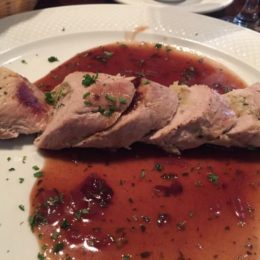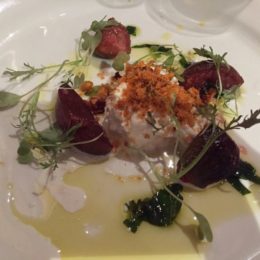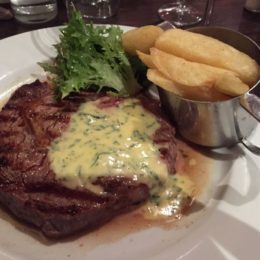On these islands alone miracles enough happen every year to equip a divine emissary. Rye is turned into oats, storms are raised to keep evictors from the shore, cows that are isolated on lonely rocks bring forth calves, and other things of the same kind are common.
From Dingle to the Burren
Officially, the Wild Atlantic Way starts around Kinsale, traverses the southern Kerry peninsulas, and then heads north along the Atlantic up to Derry, but that’s way too big a chunk of this trip to stuff into one page. So here I’m looking at our travels north from the Dingle Peninsula, up the coast to the border of Northern Ireland. First we ferried across the Shannon (there must be a song there), stopped for a view and stroll above the Cliffs of Moher, had a guided tour of the extraordinary Burren limestone plateau landscape, and dined and bedded in Galway.
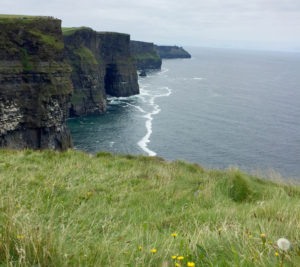
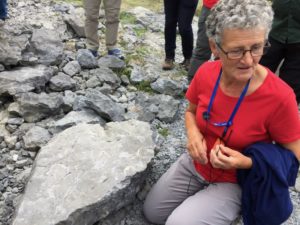
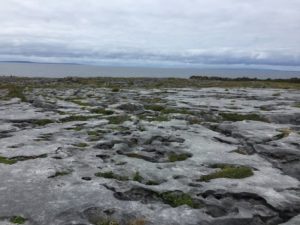
The Aran Islands
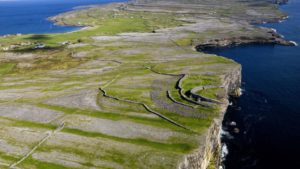
The next day was spent on Inis Mór, largest of the Aran Islands with a population of about 800 people. We arrived via ferry and took a short minibus tour around the island before hiking up to the Bronze Age fort of Dún Aonghasa, aka Aengus (named for a king in Irish mythology), perched on the edge of a sheer cliff with a spectacular view. The location includes several defensive constructions including an spectacular Chevaux-de-frise (fields of limestone slabs sticking out from the ground at different angles to thwart attacks on horseback), but the fort’s primary purpose may have been religious or ceremonial. The island is dotted with the remains of monastic settlements, including stone crosses, holy wells, beehive huts, ruined churches, and some graves alleged to belong to seven Romans who traveled as pilgrims to this important center of Celtic Christianity.
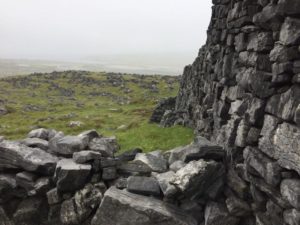

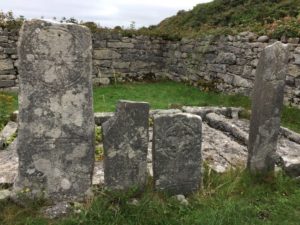
Galway and beyond
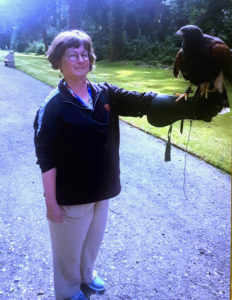
Leaving Galway Bay and its delicious mussels and oysters, we stopped in Cong (still pimping that movie with the second worst Irish accents in film history), viewed the ruins of Cong Abbey, founded by Turlough O’Connor in the 12th century on the site of a 6th century church, and checked out some Harry Clarke stained glass windows in St. Mary of the Rosary Church nearby. The day’s highlight was a hawk walk hosted by Ireland’s School of Falconry on the beautiful and extensive grounds of Ashford Castle. The castle itself is pretty impressive and a popular destination for very upscale weddings and such. The oldest Norman tower was built on the perimeter of a monastic site in 1228 (lots of monastic stuff going on in Cong, it seems). This was an amazing experience: we got to see baby hawks (recent additions have been named after Hobbits and Star Wars characters), learned how raptors are trained and cared for, and each of us got to fly a Harris hawk during our walk.
From Cong, we stopped for a quick lunch (mussels! and other stuff that some people ordered, but … mussels!!) and a look at the disturbing Coffin Ship sculpture by John Behan, both located near a fjord (yes, that is not a typo or some obscure poetic Irish word). Then on to Westport for dinner, music in the streets, and bed.
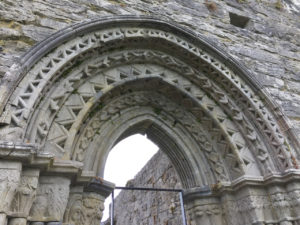
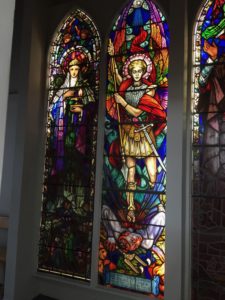
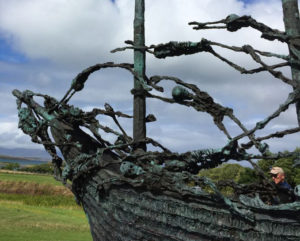
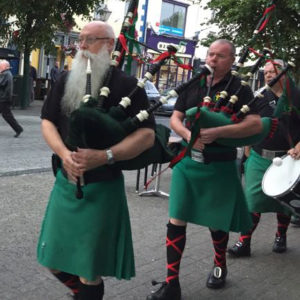
Dining in Ireland
Throughout our travels, Joe always made sure we had plenty of opportunities to sample local fare and brews, including a fantastic lunch of fresh mussels and another “happy half hour” to break up the bus journeys up the Atlantic coast. Ireland has earned a reputation for gourmet-level cuisine, and our meals, especially the many three-course dinner options we found throughout the country, were excellent and not expensive. Here’s a sampling:

